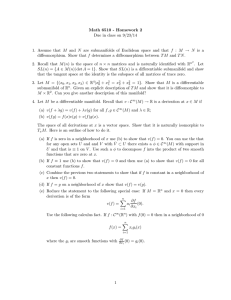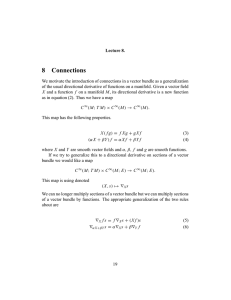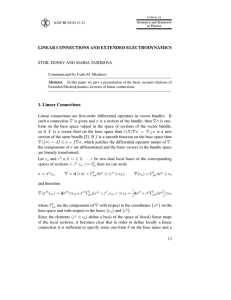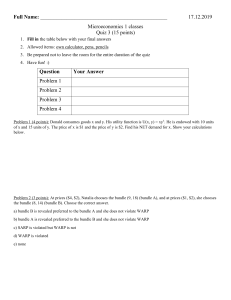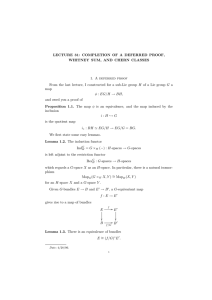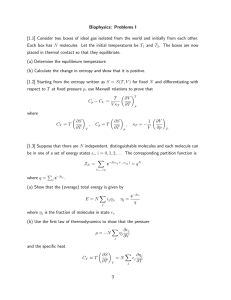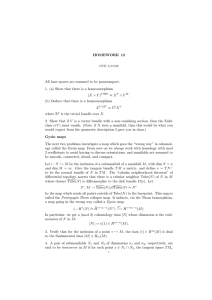Math 6510 - Homework 3 Due in class on 9/26/13
advertisement
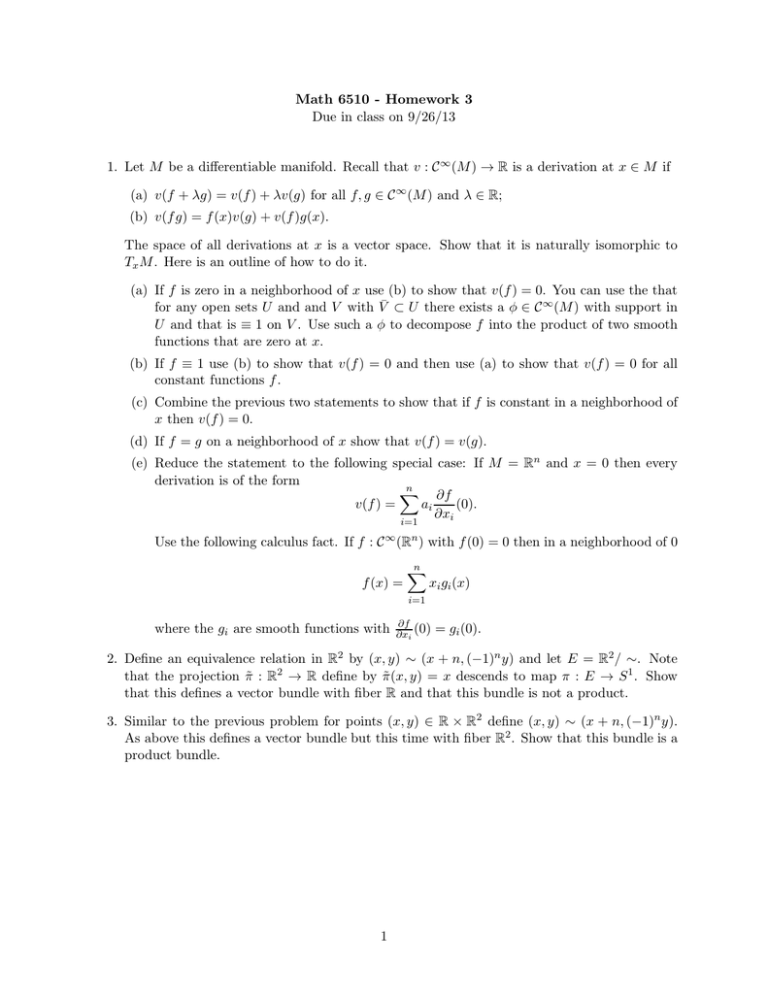
Math 6510 - Homework 3 Due in class on 9/26/13 1. Let M be a differentiable manifold. Recall that v : C ∞ (M ) → R is a derivation at x ∈ M if (a) v(f + λg) = v(f ) + λv(g) for all f, g ∈ C ∞ (M ) and λ ∈ R; (b) v(f g) = f (x)v(g) + v(f )g(x). The space of all derivations at x is a vector space. Show that it is naturally isomorphic to Tx M . Here is an outline of how to do it. (a) If f is zero in a neighborhood of x use (b) to show that v(f ) = 0. You can use the that for any open sets U and and V with V̄ ⊂ U there exists a φ ∈ C ∞ (M ) with support in U and that is ≡ 1 on V . Use such a φ to decompose f into the product of two smooth functions that are zero at x. (b) If f ≡ 1 use (b) to show that v(f ) = 0 and then use (a) to show that v(f ) = 0 for all constant functions f . (c) Combine the previous two statements to show that if f is constant in a neighborhood of x then v(f ) = 0. (d) If f = g on a neighborhood of x show that v(f ) = v(g). (e) Reduce the statement to the following special case: If M = Rn and x = 0 then every derivation is of the form n X ∂f (0). ai v(f ) = ∂xi i=1 Use the following calculus fact. If f : C ∞ (Rn ) f (x) = n X with f (0) = 0 then in a neighborhood of 0 xi gi (x) i=1 where the gi are smooth functions with ∂f ∂xi (0) = gi (0). 2. Define an equivalence relation in R2 by (x, y) ∼ (x + n, (−1)n y) and let E = R2 / ∼. Note that the projection π̃ : R2 → R define by π̃(x, y) = x descends to map π : E → S 1 . Show that this defines a vector bundle with fiber R and that this bundle is not a product. 3. Similar to the previous problem for points (x, y) ∈ R × R2 define (x, y) ∼ (x + n, (−1)n y). As above this defines a vector bundle but this time with fiber R2 . Show that this bundle is a product bundle. 1
